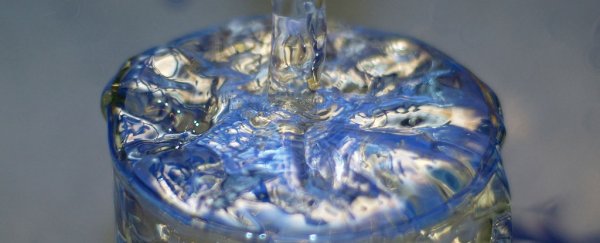There's an awful lot of money spent marketing sports and energy drinks as if they're a vital, 'scientifically proven' component in any self-respecting athlete's track bag – but do you really need to guzzle bottles of coloured liquid to ensure you're maximising your performance?
Not really, according to a new study by researchers in the UK, which found that just stirring some table sugar into water is all that's necessary to stave off tiredness in endurance sports.
Researchers at the University of Bath tested the effects of both sucrose- and glucose-based drinks on long-distance cyclists to compare how good they were at preventing the decline of carbohydrate stores in the body's liver glycogen levels.
"The carbohydrate stores in our liver are vitally important when it comes to endurance exercise as they help us to maintain a stable blood sugar level," said lead researcher Javier Gonzalez. "However, whilst we have a relatively good understanding of the changes in our muscle carbohydrate stores with exercise and nutrition, we know very little about optimising liver carbohydrate stores during and after exercise."
Both sucrose – which in its refined form is the sugar many of us keep in our cupboards – and glucose are carbohydrates that are known as 'simple sugars'. They're quickly absorbed by the body to produce energy.
However, from a molecular perspective, they're quite different. Glucose is a monosaccharide, as is another sugar, fructose. When glucose and fructose combine, they make sucrose, which is classified as a disaccharide.
While many sports and energy drinks use sucrose, some use mixtures of glucose and fructose, and some purely use glucose. To your tongue, these all taste the same (ie. sweet and rather excellent), but when they're broken down by the body, their differences become pronounced.
The molecular structure of these sugars affects the rate at which we can absorb them in the gut, with sucrose being faster. This means that glucose-only sports drinks can actually produce gut discomfort, leading the researchers to recommend simply stirring some sugar into water as a preferable method of making exercise easier to bear.
While all sugars will help restore your energy levels, it's the rate at which they do so that becomes all-important when you're engaged in demanding exercise – especially if performance-based results are important.
"We [found] that the exercise felt easier, and the gut comfort of the cyclists was better, when they ingested sucrose compared to glucose," said Gonzalez. "This suggests that, when your goal is to maximise carbohydrate availability, sucrose is probably a better source of carbohydrate to ingest than glucose."
So what's the ideal amount of sugar water you should be consuming when exercising? According to the findings, which are published in the American Journal of Physiology – Endocrinology & Metabolism, for optimal performance in sports like long-distance cycling – where exercise may last for over 2.5 hours – consuming up to 90 grams of sugar per hour, diluted to 8 grams of sugar per 100 ml, is the recommended amount.
Now admittedly, measuring out and mixing table sugar into tap water may not look quite as cool as chugging down a bottle of shiny branded sports drink, but you can't argue with science. And think of all the money you'll be saving. Just don't forget to brush afterwards.
But what about electrolytes? After all, they're one of the core substances energy drinks are specially designed to replenish, right? Luckily, if you search the web, there are about a zillion ways to make electrolyte-laden drinks in the comfort of your own home as well (although none are quite as effortless as just adding sugar to water).
